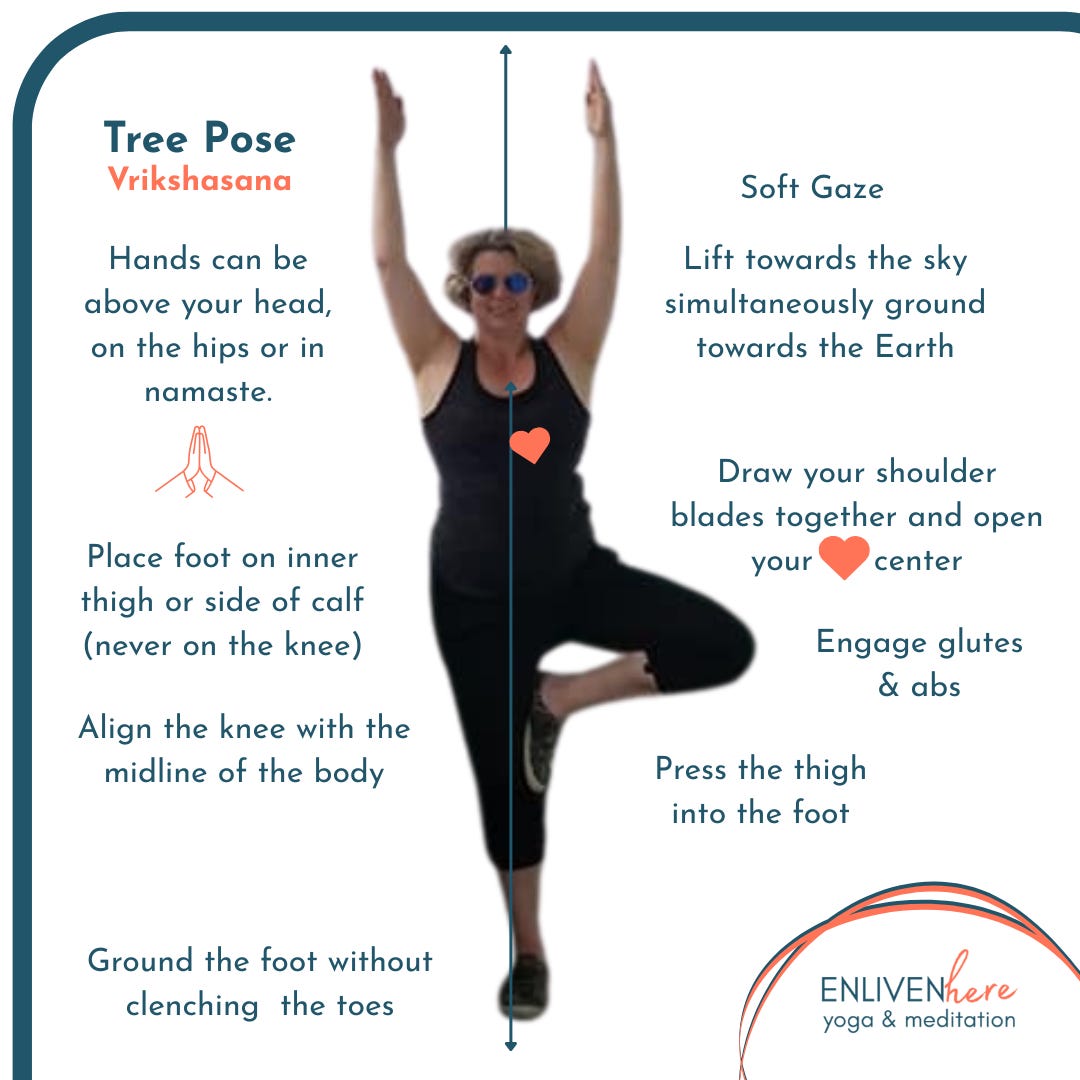Does Foot Placement in Tree Pose Really Matter?
A Humble Inquiry from a Yoga Therapist Who Had to Double-Check Herself
Insight from the Mat
Today in class, a student shared the sweetest story: she had been practicing yoga with her granddaughter, and as they moved into Vrikshasana (Tree Pose), she gently guided her to place her lifted foot alongside her calf or inner thigh, steering clear of the knee. Her granddaughter, however, confidently replied that her teacher told her the “right way” was to place the foot on the knee.
This exchange sparked something in me. As a yoga therapist, I’ve always been taught that placing the foot directly on the knee during Tree Pose isn’t ideal. But I had to pause and ask myself: Is that still accurate? Does it really matter? Have I been holding onto an outdated cue?
So I did what any anatomy-loving, professionally-trained yoga nerd might do—I went back to the bones. I reviewed anatomy books, scanned current teaching materials, and refreshed my understanding of joint mechanics. What I found not only confirmed what I had been taught—it helped me find a deeper, more compassionate way to explain why foot placement matters, both to students and teachers.
Let’s Talk Tree Pose: A Structural View
Tree Pose is often one of the first balancing postures introduced in a yoga practice. It’s simple in appearance, but like all standing poses, it's a lesson in stability, body awareness, and alignment. The key point I want to focus on here is this:
👉 Where we place the lifted foot in Tree Pose deeply impacts the stability and safety of the standing knee.
Here’s why:
1. The Knee Is a Hinge Joint—Not a Pressure Point
The knee is beautifully designed for flexion and extension, with a tiny allowance for rotation when the joint is bent. What it’s not designed for is lateral (side) pressure.
When we press the sole of the lifted foot into the side of the standing knee, we create a force that pushes the joint sideways. That’s not its job, and over time, especially in children or older adults, this can lead to ligament strain or exacerbate existing issues like arthritis or meniscus sensitivity.
2. Supporting the Knee Means Supporting the Chain
The knee doesn’t work alone. It lives in a kinetic chain between the ankle and the hip. A well-aligned Tree Pose (and any standing pose, really) supports the ankle under the knee, and the knee under the hip. When the lifted foot is placed at the calf or inner thigh, it’s easier to maintain that vertical stacking. The load remains balanced. The knee is spared from unnecessary torque or sideways pressure.
So Where Should the Foot Go?
Simple:
Below the knee – either with the toes touching the floor (kickstand) or the foot pressing gently to the inner calf.
Above the knee – into the inner thigh, with enough engagement through both legs to create mutual stability.
🔺 Avoid placing the foot on the side of the knee joint. It’s not about being rigid—it’s about being kind to the structures that keep us mobile and strong.
A Gentle Way to Teach It (Especially to Kids)
Wanting to support her in guiding her granddaughter without it feeling like a correction (because let’s be honest, kids often hear that as criticism), I shared this with her:
“Guide her back to Tadasana—mountain pose. Help her see how Tree Pose is still Mountain Pose on one leg. We want to maintain the same long line of energy: ankle, knee, and hip in vertical alignment. That’s easiest to feel when the lifted foot is on the calf or the thigh, not pushing into the side of the knee.”
This approach invites curiosity and alignment awareness instead of right/wrong thinking. And really, isn’t that the heart of yoga?
My Final Thoughts
I didn’t write this because I had all the answers—I wrote it because I had a question. And I’m so glad I did.
Taking time to revisit what I thought I knew reminded me of something essential: yoga asks us to stay curious, especially about the body and how we move through the world. As it turns out, I wasn’t wrong about Tree Pose—but I did gain a renewed appreciation for the structure of the knee and the importance of guiding our students safely, no matter their age.
I’m always grateful for the questions that arise in class. They don’t just spark new conversations—they keep me learning, reflecting, and refining my understanding. My students are my teachers, too.
So whether you’re teaching a wide-eyed child or an experienced adult, Tree Pose offers an opportunity to honor the body’s natural design, support the integrity of our joints, and practice yoga that sustains us long after we step off the mat.



